12 May Ant mimicry by spiders
Ant mimicry
Ant mimicry or myrmecomorphy is mimicry of ants by other species.
Why would other organisms want to pretend to be an ant?
This has to do with ants being either unpalatable or known to be aggressive towards certain species. The mimicking species might hide among ants, infiltrate their nests and steal or feed on their brood or even hunt them while being unrecognized.
They also profit from the fact that i.e. birds know, that ants are not good prey because they simply do not taste due to their acids.
This has been observed with Synageles venator, an ant-mimicking jumping spider, that resembles an ant visually. We will learn more about this species later.
Benefits and risks of mimicry
Spiders are actually some the most common ant mimics and mimic them anatomically and behaviorally:
pedipalps may resemble the ant´s mandibles, legs are often coloured to appear thinner, more ant like, and used to imitate antennae by lifting them off the ground and waving them in the air.
The colours of the ants are also mimicked by the spiders, which often have elongated abdomens to match the ant´s anatomy.
While the mentioned benefits of the mimicry can lower the risks to fall prey to ant-averse predators there is a downside to the fact as well.
Predators specialising on ants will now more likely pose a threat for the spider.
The morphological adaption of the spiders abdomen to the look of the ant results in a decreased number of eggs that the spider can produce.
There are always two sides to every coin. Living among ants puts any ant-associating spider in grave danger anyways.
Let us take a look at how these spiders, that have managed to evolve into such perfect ant look-alikes, do actually look and compare to their models.
The selected species are mainly jumping spiders but also one very special species of Micaria.
This one is not only a perfect ant-mimic, but also a spectacular looking spider in general.
Up-close there are beautiful colours to discover, while, with the bare eye, it looks identical to a uniform-coloured ant.
Ant mimicking spiders
Myrmarachne marshalli (Peckham & Peckham, 1903) – South Africa
The male of Myrmarachne marshalli is easily recognized by its huge elongated chelicerae.
The females do not have these and look more like ants.
In comparison to other ant-mimicking jumping spiders M. marshalli is relatively big, especially regarding the males (up to 7mm) with their before mentioned chelicerae and fangs.
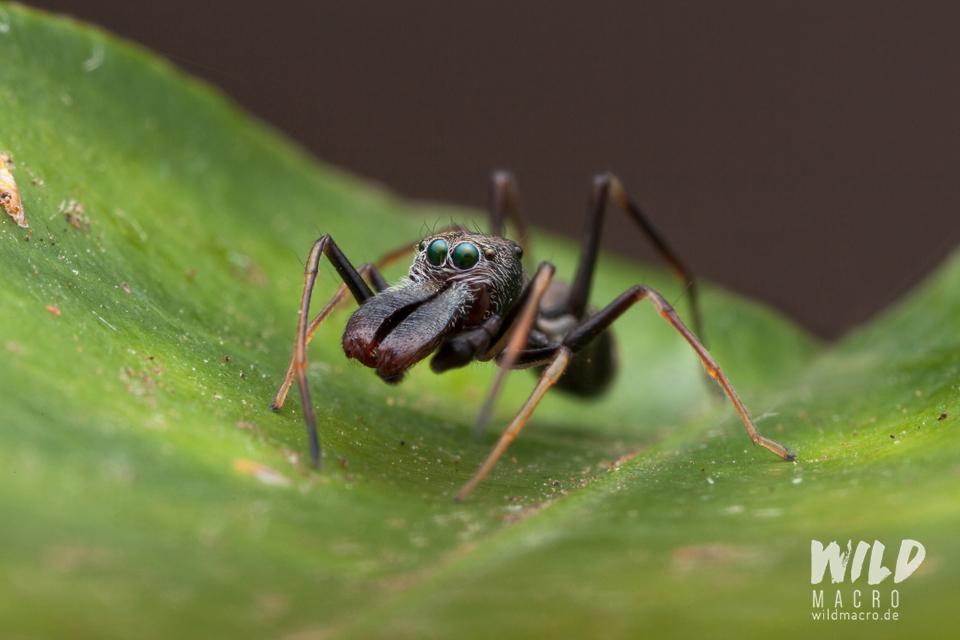
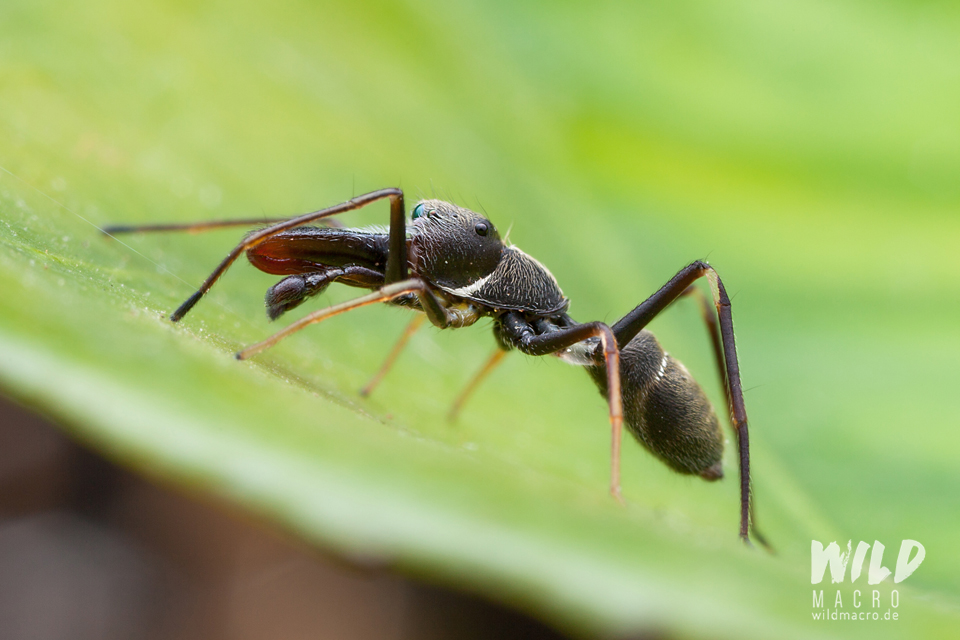
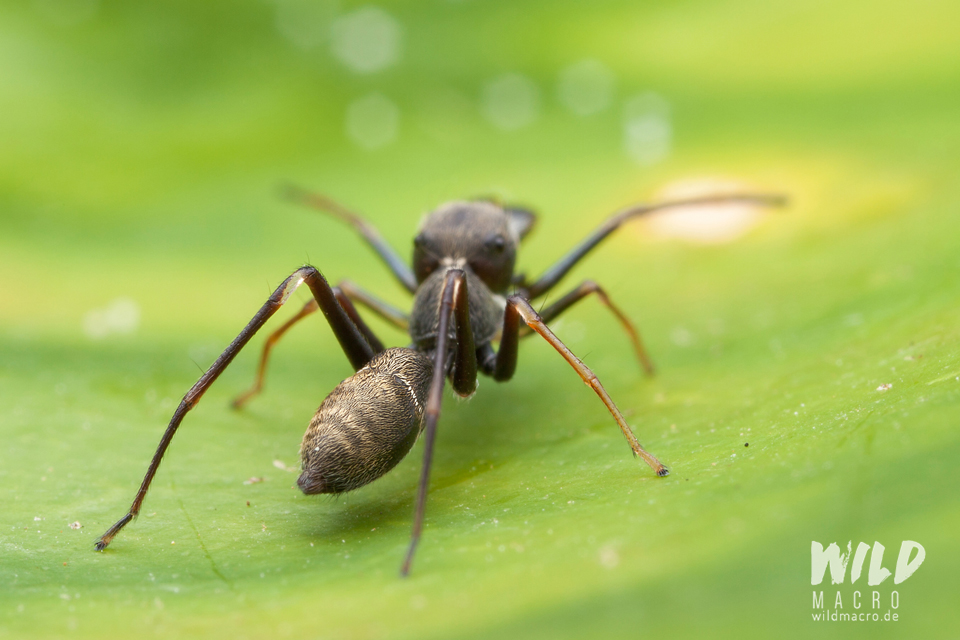
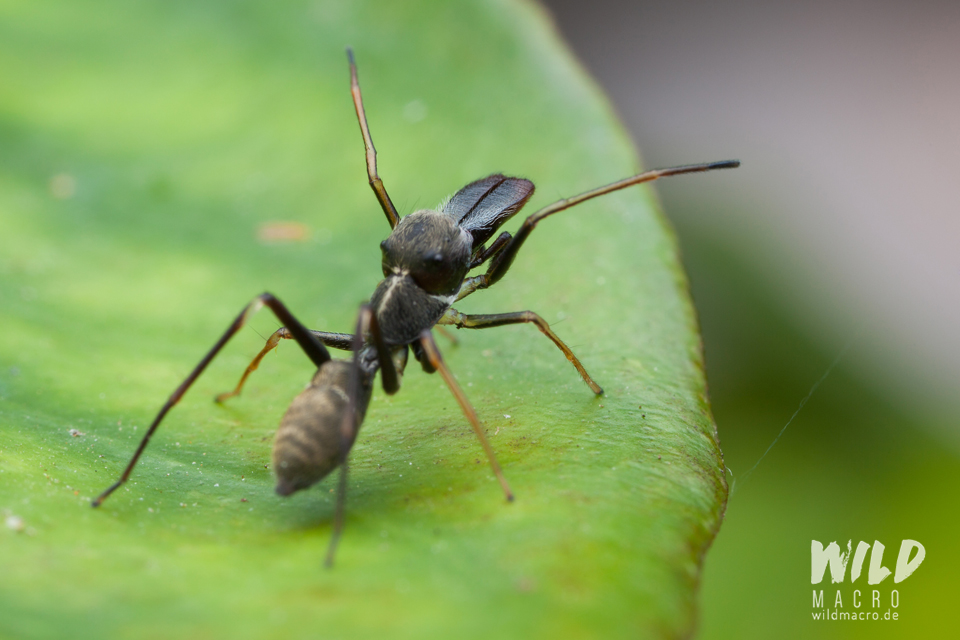
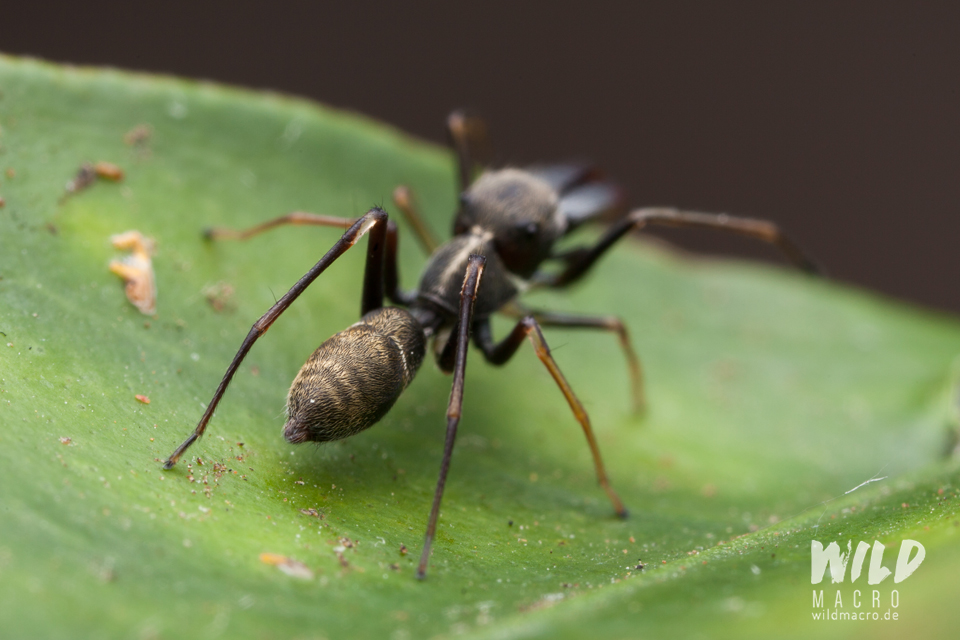
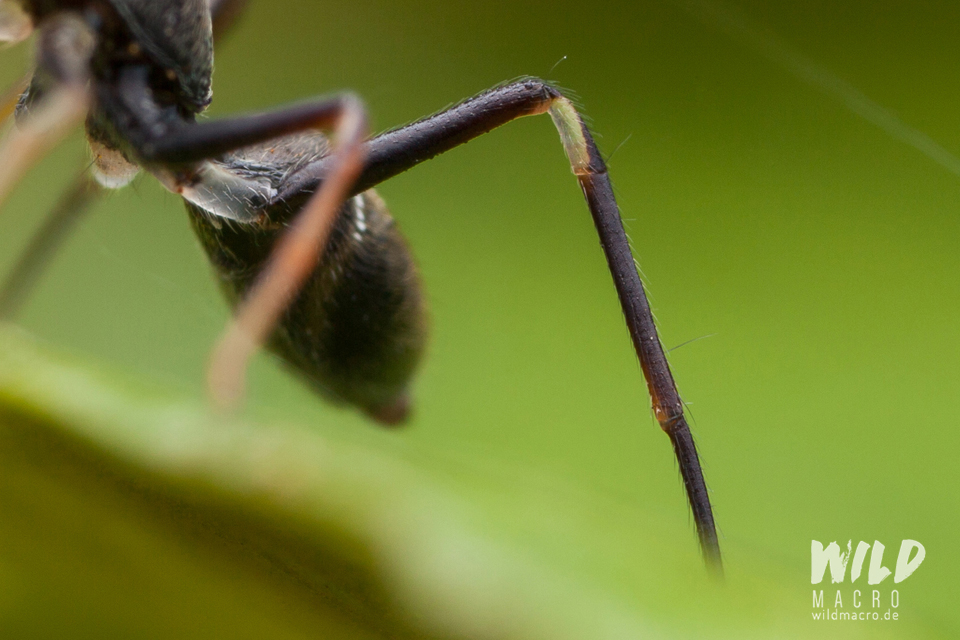
Synageles venator (Lucas, 1836) – Germany
This species lays very few eggs, which suggests they have a high chance of surviving due to the mimicry being very effective.
In an experiment where birds were fed ants and later Synageles venator, it became obvious that the birds did not feed on the spiders after having experienced a negative effect from the ingestion of the ants, or, to be more precise, from their acids.
This shows how effective the mimicry is and that it definitely has a defensive component.
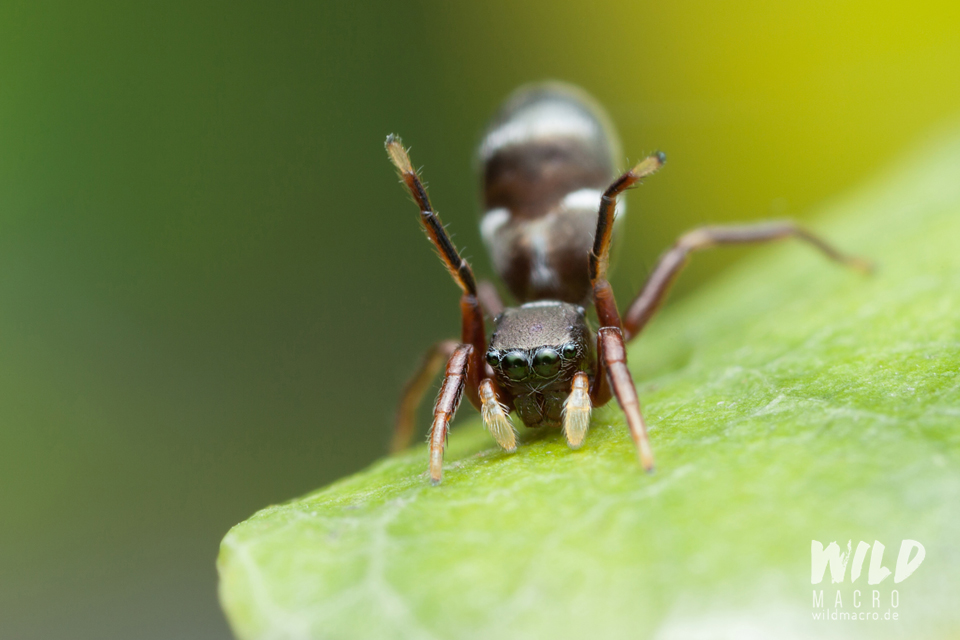
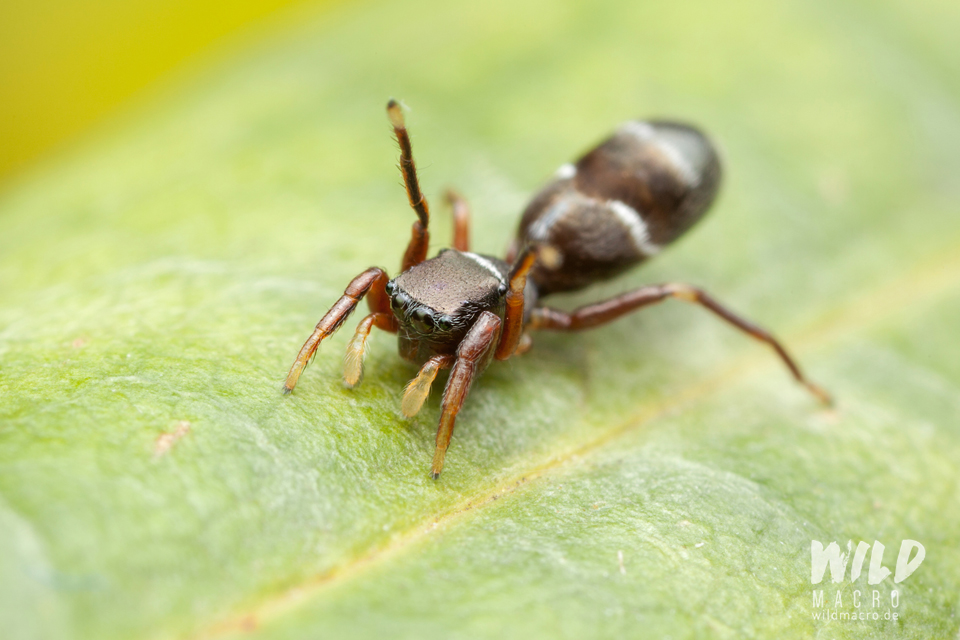
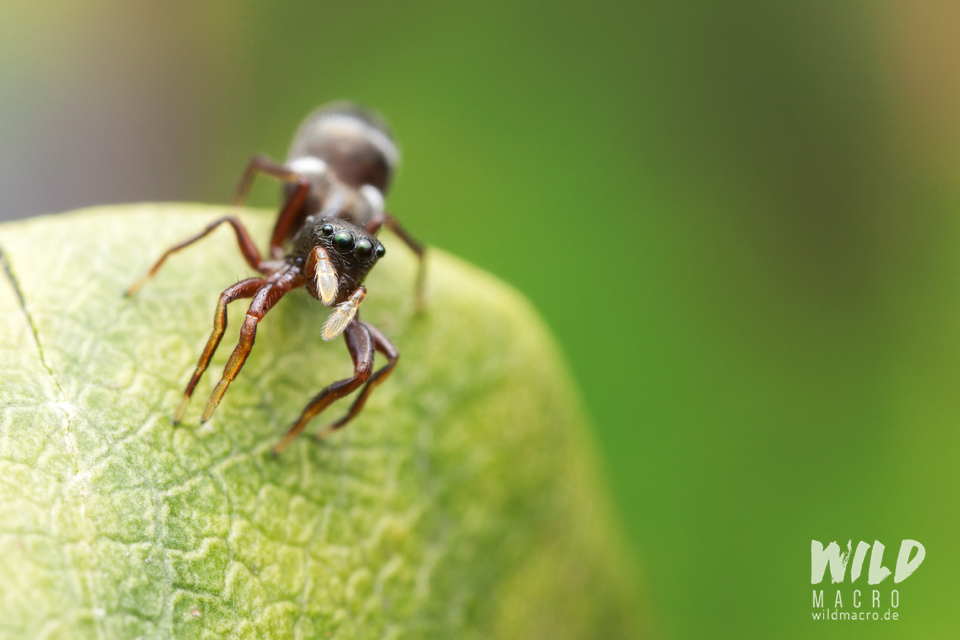
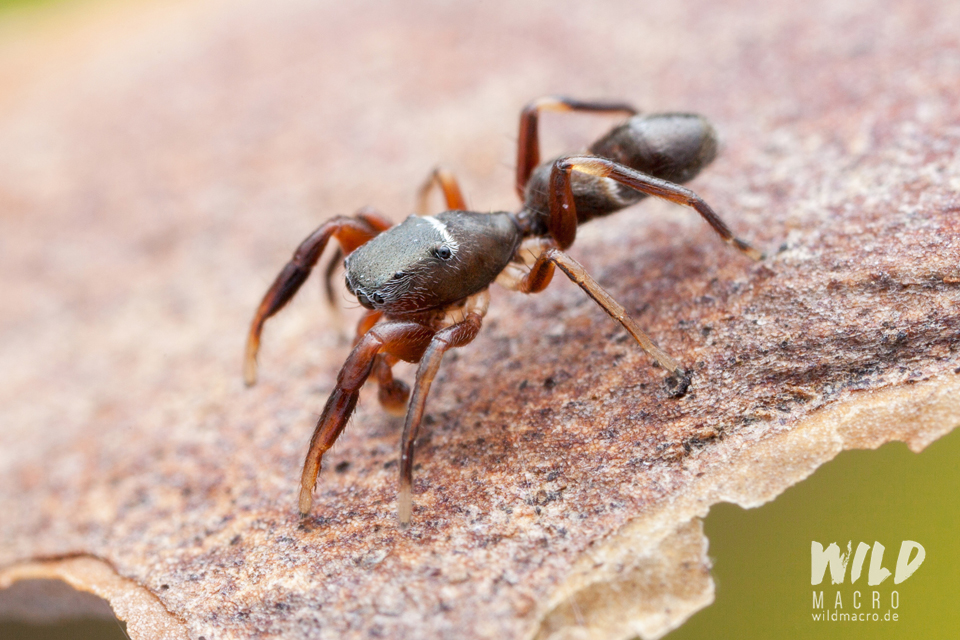
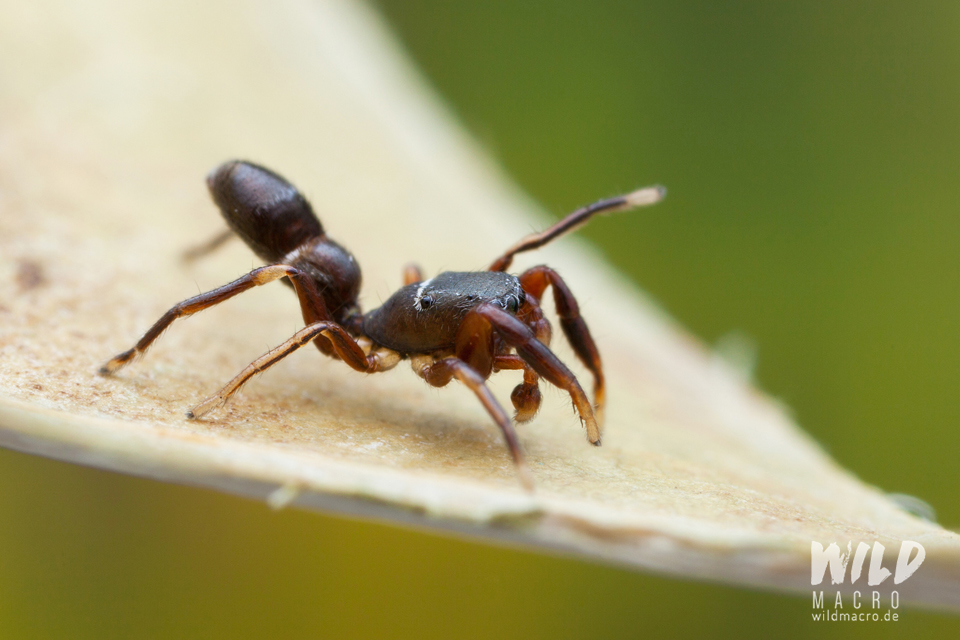
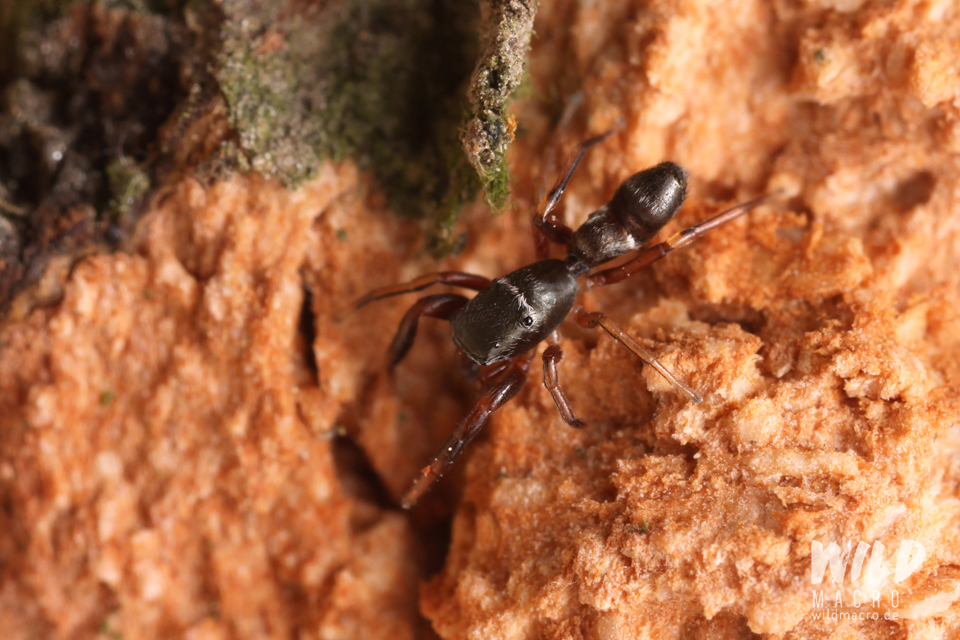
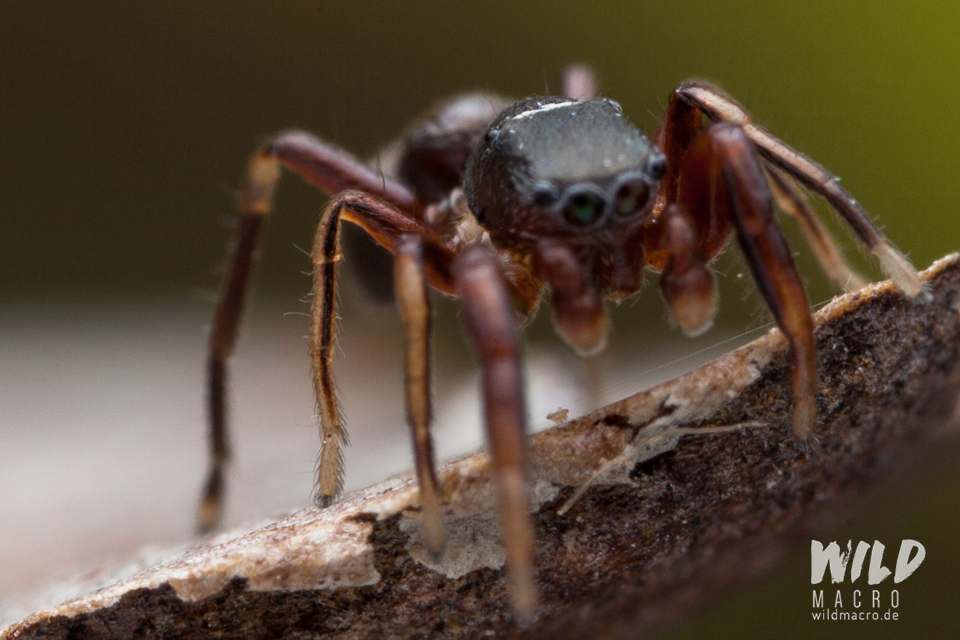
Micaria sp. – South Africa
There are quite a few other spider species that mimic ants as this is not a technique exclusively used by jumping spiders.
Micaria is a genus of tiny ant mimicking ground spiders (Gnaphosidae) that has a very slender physiology and moves very fast and abrupt, very much like a real ant.
The spider does not have a clearly constricted opisthosoma but shows a dent which could also have be caused by dehydration.
The beautifully coloured iridescent scales can only be seen with high magnification: with the naked eye the spider looks black or grey and is hardly to tell apart from the ants, to which they keep close proximity.
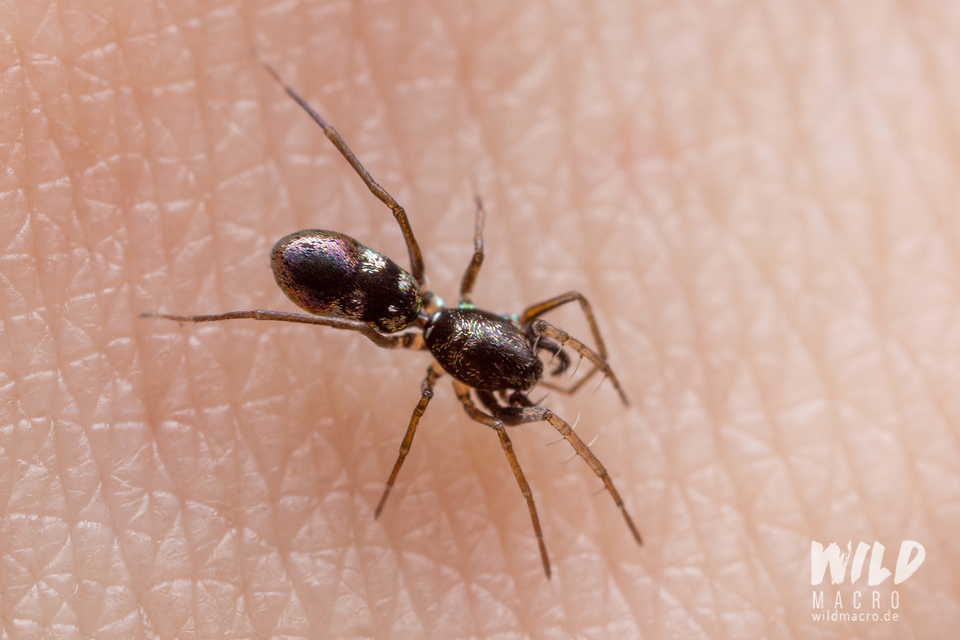
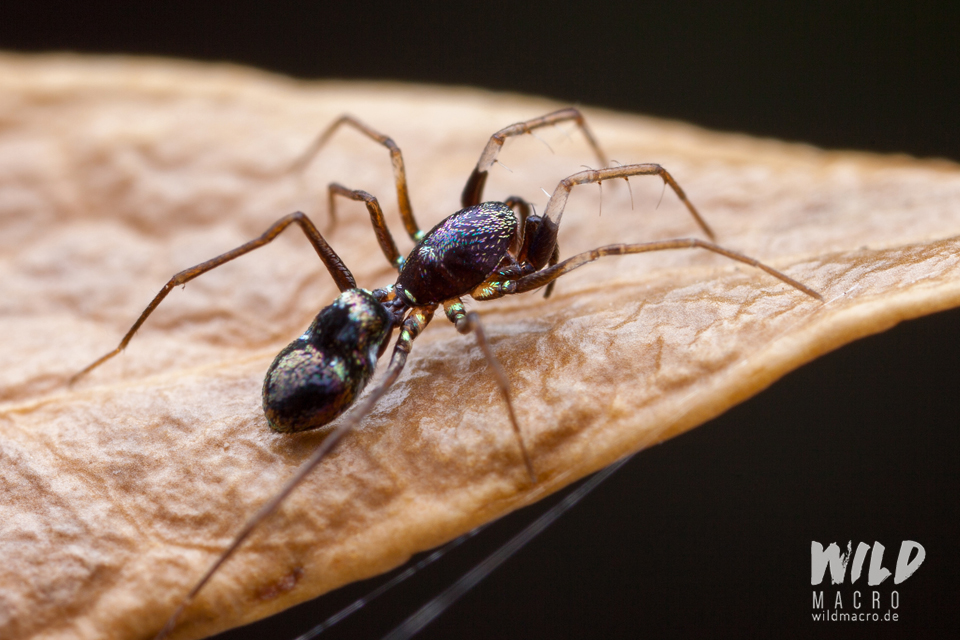
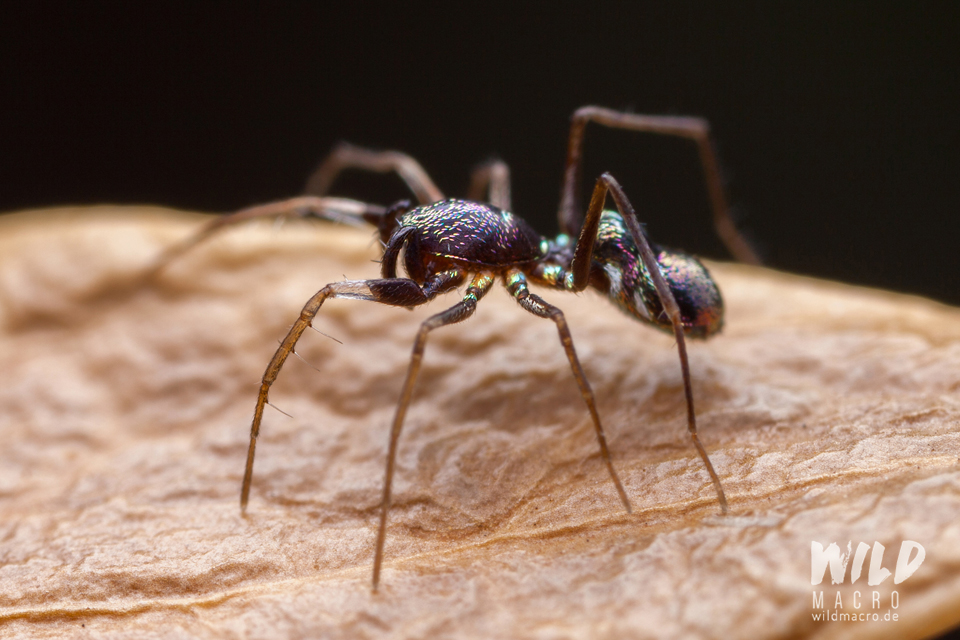
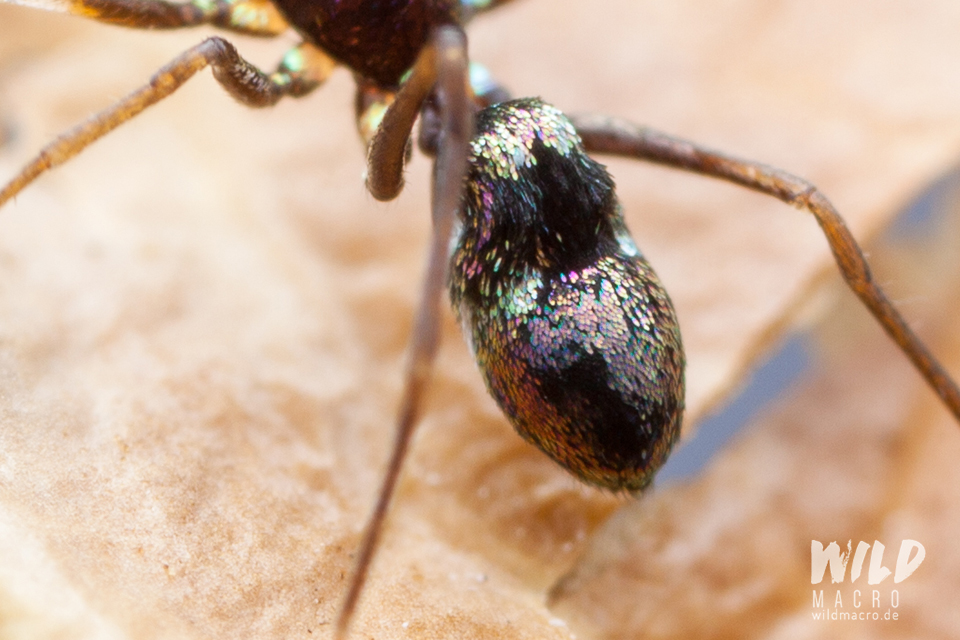
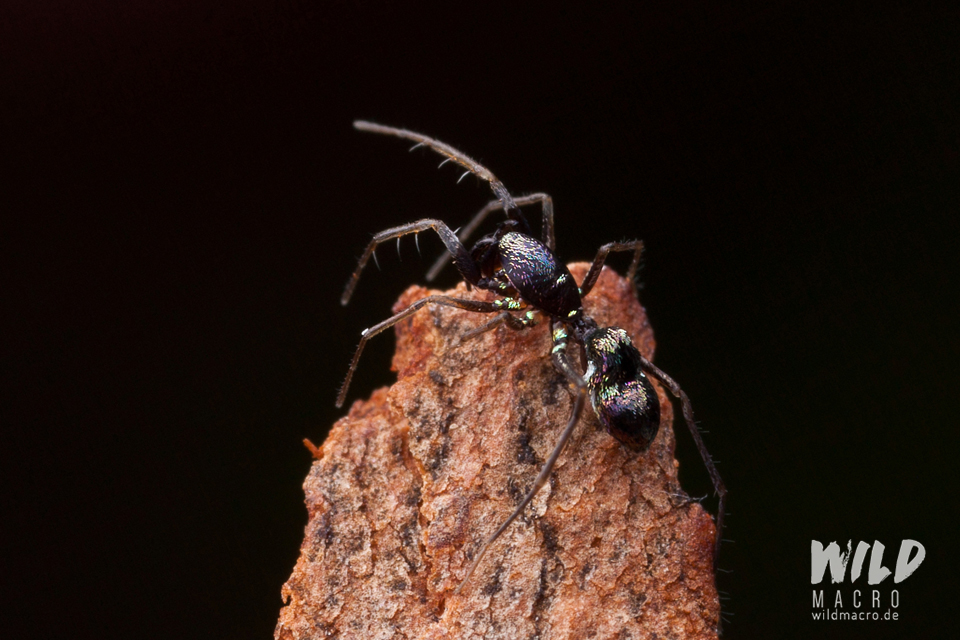
Ant mimicry in insects
Ant mimicry is a very effective mechanism and it is no wonder, that it can be found in various families of insects and spiders.
The following photos shows an insect that is pretending to be an ant, too:
It is Himacerus mirmicoides,the ant damsel bug.
In its nymph stage it strongly resembles an ant.



Stuart Taylor
Posted at 18:48h, 09 AugustHi, in the late 1990’s I observed an ant mimicking spider in Central Zambia, just off Manza road, The ant looked exactly like what we call Soldier Ants and I watched it capture one of the ants right next to their entrance into their ground burrow. The ants are about one and a half to two centimeters long and a dull grayish black colour. They March in a compact column about five centimeters wide (These are not the more common red shiney Safari ants called Pahsha by locals in the area).
The spider sat on a little clod of soil about two and a half centimeters in diameter and about a centimeter high, about eighty centimeters away from their burrow entrance. As the ant column was returning to the nest there were ants passing by on both sides of the soil clod upon which the spider was waiting. The spider moved occasionally slightly to its left or right as if to focus on a particular passing ant. Suddenly it jumped and bit one of the ants. and immediately jumped back onto the clod of soil. The ant victim curled up and died almost immediately. In fact I was totally amazed at how quickly it died and remained motionless.
This attack resulted in an immediate response from all the other ants close by. They emitted a low volume hissing, chirping sound, broke rank from the tight knit column and started wandering around looking for the attacker. The spider at this point kept turning around on the soil clod In stop-start motions to face any possible ant attack from any direction. Amazingly non of the ants actually discovered the spider in all their frantic running around searching. The ants eventually all ran into the burrow leaving their dead companion curled up near the soil clod. The spider then jumped down and grabbed its victim and jumped back onto the clod. I guess it was digesting the dissolved bodily juice out of the ant as it remained static for some time with its fangs in the ant.
A somewhat fascinating observation..
wildmacro-chris
Posted at 13:33h, 12 AugustHello Stuart, that is a very interesting story and observation. Thank you for sharing this. It is fascinating that ant mimics benefit in a different way from their visual similarity to ants, as i mentioned in my article as well. While some are protected from birds and other predators, some seem to use their distinct kind of camouflage/mimicry for stealth attacks and preying on ants. Some can even enter ants´ nests as far as I know. There are so many facettes of behavior in nature that I m amazed every single time i read about something new or am able to observe something like what you just described. Have a great day and thanks again.